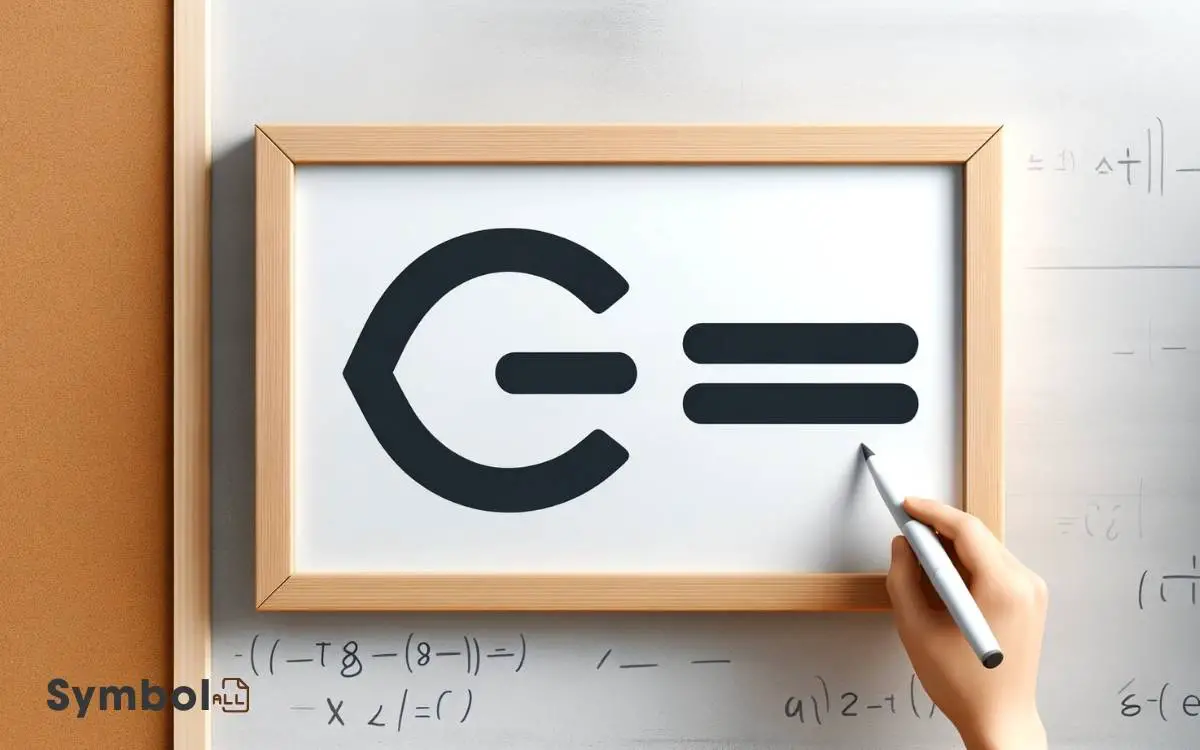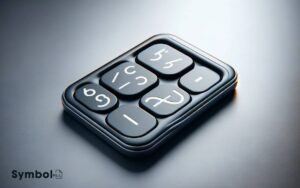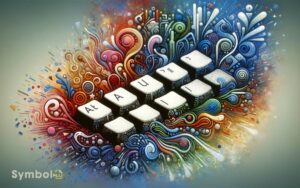How to Use Greater Than Symbol? Explains!
To use the crucial than symbol (>), remember it’s like an arrow pointing at the smaller number. Picture it: two lines meeting at an acute angle.
The wide end always opens toward the larger value, while the pointed end targets the smaller one. It’s your go-to for comparing numbers simply place it between them to show which is larger.
In programming, it plays an essential role in decision-making, letting you control your code’s flow with precision.
When you’ve got it down, it not only makes math easier but also sharpens your problem-solving in real-life scenarios. Mastering its use opens up further insights into mathematics and beyond.

Key Takeaways
Understanding the Basics
To grasp the concept of the greater than symbol, you first need to understand its fundamental role in comparing two quantities. This symbol is pivotal in mathematics, especially when you’re exploring numbers or objects based on their value or size.
The greater than symbol helps you quickly determine which of two numbers is larger without having to investigate into complex calculations. It’s a basic yet essential tool in your mathematical toolkit, facilitating clear and immediate comparisons.
Symbol Representation
Now, let’s explore how the greater than symbol is represented. Essentially, it’s depicted as two straight lines that meet at an acute angle, pointing to the right.
Imagine an arrowhead, aiming towards a higher value; that’s your greater than symbol. It’s key you familiarize yourself with its visual form, as it’s a fundamental tool in distinguishing values.
Remember, it’s not just about recognizing the symbol but also understanding its orientation. The wide open end always faces the larger number or expression, while the pointed end targets the smaller.
This visual cue helps you quickly determine the relationship between two quantities without confusion.
Getting comfortable with this symbol’s representation sets a solid foundation for deeper mathematical comprehension, paving the way for exploring more complex concepts without jumping ahead into their specific applications in mathematics.
Common Uses in Mathematics
You’ll often use the greater than symbol when comparing numerical values, distinguishing which of two numbers is larger.
It’s also important in solving inequalities, a fundamental aspect of algebra that helps you understand how different values relate to each other.
These applications are essential in mathematics, shaping your problem-solving skills and analytical thinking.
Comparing Numerical Values
In mathematics, we often use the greater than symbol (>) to compare two numerical values, indicating when one number is larger than the other. It’s a simple yet powerful tool that helps you quickly understand the relationship between quantities.
For instance, if you’re comparing the number of apples in two baskets, and basket A has 5 apples while basket B has 7, you’d say 7 > 5, demonstrating that basket B has more apples.
This concept isn’t limited to evaluating objects; it extends to measurements, distances, temperatures, and even abstract quantities.
Whenever you’re gauging the magnitude of numbers, the greater than symbol serves as a clear indicator of which value surpasses the other.
Remember, it points towards the smaller number and opens towards the larger, guiding you in numerical assessments and comparisons.
Solving Inequalities
Solving inequalities, a fundamental aspect of mathematics, involves finding all possible values that satisfy a given condition, enabling you to comprehend and work with a range of solutions.
When addressing inequalities, you are not just searching for a single answer but a whole set of possibilities that meet the criteria.
Here’s a quick guide to understanding inequalities:
| Inequality | Symbol | Example |
|---|---|---|
| Greater than | > | x > 5 |
| Less than | < | y < 10 |
| Greater than or equal to | ≥ | z ≥ -2 |
These symbols assist you in expressing a relationship between two quantities. For example, if you’re solving `x > 5`, you’re identifying all values of `x` that are greater than 5. Grasping this concept is crucial, as it unveils a broader understanding of how values relate in mathematics.
Comparison in Programming Languages
Most programming languages allow you to compare values using the greater than symbol (>). This operator checks if the value on its left is larger than the one on its right.
For instance, in Python, writing `5 > 3` returns `True`, because 5 is indeed greater than 3. This comparison is essential in decision-making processes within your code, like controlling flow with if-else statements or while loops.
Greater Than Vs. Greater Than or Equal to
You’ll find that distinguishing between the ‘greater than‘ (>) and ‘greater than or equal to’ (≥) symbols is essential for precise mathematical expressions and programming conditions.
Each symbol’s practical usage affects how algorithms and formulas are interpreted and executed. Understanding their symbolic meaning guarantees you apply the correct operator in your calculations, leading to accurate outcomes.
Symbolic Meaning
When comparing quantities, the greater than symbol (>) denotes a larger value on one side, while the greater than or equal to symbol (≥) includes both greater values and importance.
In essence, when you use > between two numbers, you’re stating that the number on the left is strictly larger than the one on the right. For example, 5 > 3 means five is greater than three.
On the other hand, ≥ can express not only that one number is larger but also the possibility of them being equal. So, 5 ≥ 3 indicates five is either greater than three or exactly equal to three.
This subtle difference is critical in mathematics, economics, and various fields where precision in numerical relationships is paramount.
Practical Usage Differences
Understanding the practical differences between the greater than (>) and greater than or equal to (≥) symbols is important when applying them in various contexts.
The greater than symbol (>) is used when you’re comparing two values and the first value is strictly larger than the second. For instance, if you’ve got 10 apples and your friend has 8, you’d say, ‘I have > 8 apples.’
On the other hand, the greater than or equal to symbol (≥) includes the possibility of equality. This means if you’re comparing your apples again, and you might’ve 8 or more, you’d say, ‘I have ≥ 8 apples.’
It’s essential you choose the correct symbol to accurately convey the relationship between the values you’re comparing.
Practical Examples
Exploring practical examples, let’s investigate how the greater than symbol is used in everyday situations and mathematical contexts.
Imagine you’re comparing temperatures. If today’s temperature is 75 degrees and yesterday’s was 68 degrees, you’d say today’s temperature is greater than yesterday’s, symbolically, 75 > 68.
In finances, if you’re comparing your savings, and you have $500 this year compared to $450 last year, it’s expressed as $500 > $450, indicating growth.
In mathematics, the symbol helps solve inequalities. For instance, solving for x in an equation like x + 2 > 5 leads to x > 3, meaning x could be any number greater than 3.
These examples show the symbol’s utility in expressing relationships where one quantity is larger than another.
Tips for Remembering Usage
After examining how the greater than symbol functions in various contexts, let’s now focus on some effective strategies to help you remember when and how to use it correctly.
To enhance your understanding, consider this table with key tips:
| Strategy | Description |
|---|---|
| Visual Reminder | Think of “>” as a mouth open towards the larger number. |
| Number Line | Visualize numbers on a line; greater numbers are to the right. |
| Alphabetical Order | Remember, in alphabetical order, “>” points to the latter. |
| Hunger for More | “>” is “hungrier” for the bigger value. |
| Practice | Regularly use it in exercises to reinforce understanding. |
These approaches aim to solidify your grasp of the greater than symbol, ensuring precise and confident usage in your mathematical expressions.
Mistakes to Avoid
Often, users mistakenly reverse the greater than symbol, inadvertently implying the opposite of their intended comparison. This error can greatly alter the meaning of a statement, leading to confusion or misinterpretation.
To avoid this mistake, double-check which value is larger and make sure the symbol points towards the smaller number. This ensures clarity and reduces the chances of misinterpreting numerical relationships. Additionally, understanding how to use approximate symbol can help indicate when values are close but not exact, ensuring precision in your communication. Always review your comparisons to confirm that both the symbol and context align with what you are trying to convey.
Another common pitfall is using the greater than symbol when an equation or scenario actually requires a ‘greater than or equal to‘ sign.
This subtle difference might seem trivial, but it changes the conditions of comparison, potentially excluding critical values that satisfy the equation or condition.
Always review the context of your comparison to determine if it’s truly exclusive or if it encompasses equality. By being mindful of these mistakes, you’ll enhance your precision and effectiveness in mathematical communication.
Expanding Your Knowledge
Delving deeper into the nuances of mathematical symbols can greatly enhance your understanding and application of complex equations.
To further expand your knowledge on the greater than symbol, consider these key points:
- Understand Inequalities: Recognize how the greater than symbol forms the basis of inequalities, comparing two values or expressions.
- Explore Properties: Familiarize yourself with properties such as transitivity, which allows you to make logical conclusions from multiple comparisons.
- Apply in Real-world Scenarios: Use this symbol to solve practical problems, from budgeting to scientific measurements.
- Combine with Other Symbols: Learn to use it alongside other mathematical symbols to express ranges, limits, and exclusions effectively.
Conclusion
In the dance of digits and symbols, you’ve now stepped beyond the threshold of simply recognizing the ‘greater than’ symbol to embracing its multifaceted role across various domains.
Remember, it’s not just about superiority in numbers but also a gateway to precise logic in programming and beyond.
Keep these tips close, sidestep common pitfalls, and continue to expand your horizons.
As you journey forward, let this knowledge be your compass, guiding you through the mathematical landscapes and the intricate syntax of programming languages.






